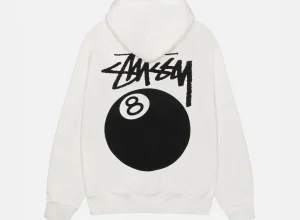Comme des Garçons: A Revolutionary Force in Avant-Garde Fashion
Comme Des Garcons Play Official Clothing Web Store Shop for CDG hoodies and shirts online Elevate your style with unique designs and fashion forward
Comme des Garçons (CDG) is a Japanese fashion brand founded in 1969 by Rei Kawakubo. Known for its unconventional designs, avant-garde aesthetics, and defiance of traditional fashion norms, CDG has become a cultural phenomenon within the global fashion industry. From its experimental clothing lines to its distinct play on silhouettes and textures, Comme des Garçons has redefined the boundaries of fashion, continuously challenging the status quo. This article delves into the history, influence, and iconic characteristics of Comme des Garçons clothing, celebrating its revolutionary impact on contemporary style.
The Origins of Comme des Garçons
Founded by Rei Kawakubo in Tokyo, Japan, Comme des Garçons made its debut in the late 1960s. Initially, Kawakubo did not have formal training in fashion design, but she worked as a stylist, and it was from this experience that she developed a passion for clothing. The brand’s name, which translates to “Like Boys” in French, reflects Kawakubo’s desire to design clothing that defied traditional gender norms. CDG’s early collections, heavily influenced by punk culture and anti-fashion movements, were radical for their time, featuring oversized silhouettes, asymmetrical cuts, and dark, monochromatic palettes.
By 1981, Kawakubo made her mark internationally when she showcased her first Comme des Garçons Clothing collection in Paris. The collection, notable for its distressed fabrics, frayed edges, and deconstructed garments, shocked the fashion world. Dubbed as “Hiroshima chic” for its austere, post-apocalyptic vibe, the show established CDG as an avant-garde brand and cemented Kawakubo’s reputation as a rebellious visionary.
Key Characteristics of Comme des Garçons Clothing
Deconstruction and Reconstruction
One of the hallmarks of Comme des Garçons is its pioneering use of deconstruction. Kawakubo’s philosophy is that clothing does not need to conform to traditional ideals of beauty or structure. She often deconstructs garments, stripping them of their conventional forms and reassembling them in unexpected ways. This process results in pieces that challenge preconceived notions of fashion, forcing the wearer to rethink how clothing should look and function.
This deconstructive approach extends beyond mere aesthetics. Kawakubo uses fashion as a medium to explore themes of imperfection, asymmetry, and unconventional beauty. Her clothing often features unusual combinations of fabrics, deliberate rips, and irregular shapes, all contributing to a uniquely thought-provoking aesthetic.
Androgyny and Gender Fluidity
Comme des Garçons has consistently blurred the lines between men’s and women’s fashion. Kawakubo’s designs reject traditional gender binaries, favoring androgynous styles that can be worn by anyone, regardless of gender. The oversized, loose-fitting garments, often resembling abstract sculptures, are meant to liberate the wearer from societal expectations surrounding body image and gender presentation.
CDG’s subversive stance on gender has made it a favorite among fashion enthusiasts who seek to break free from conventional norms. The brand’s ability to embrace gender fluidity while maintaining an artistic, high-fashion appeal has been instrumental in pushing boundaries and opening conversations about the role of fashion in gender expression.
Avant-Garde Aesthetics
Comme des Garçons is synonymous with avant-garde fashion. Kawakubo’s collections often feature garments that are less about wearability and more about artistic expression. She has consistently rejected the idea that fashion should be purely functional or decorative, instead viewing it as a form of abstract art. Many of her designs incorporate exaggerated proportions, unconventional materials, and unexpected textures.
The brand’s avant-garde nature means that its collections can sometimes feel challenging or even alienating to mainstream audiences. However, for those who appreciate the intersection of fashion and art, CDG’s pieces are nothing short of revolutionary. They invite introspection and dialogue, turning clothing into a medium for deeper exploration of societal themes.
Collaborations and the Commercial Side of CDG
Despite its avant-garde ethos, Comme des Garçons has successfully found a balance between high fashion and commercial success. One of the most notable ways the brand has achieved this is through its extensive range of collaborations with other brands and designers. Over the years, CDG has worked with brands such as Nike, Converse, and Supreme, creating unique, limited-edition collections that merge streetwear sensibilities with CDG’s distinctive aesthetic.
The 2002 launch of the “Comme des Garçons PLAY” line marked a significant shift towards accessibility. The PLAY line, which features more casual clothing like T-shirts and hoodies emblazoned with the brand’s iconic heart logo, has been highly popular among younger consumers. While still maintaining the essence of CDG’s avant-garde identity, PLAY offers a more affordable and approachable entry point into the world of Comme des Garçons.
Additionally, CDG’s collaborations with other high-end designers, such as Junya Watanabe and Gosha Rubchinskiy, have helped the brand stay relevant across multiple fashion subcultures. These partnerships allow Comme des Garçons to engage with different audiences while retaining its reputation as a cutting-edge, artistic brand.
Influence on Modern Fashion
Comme des Garçons’ influence on modern fashion cannot be overstated. Rei Kawakubo’s groundbreaking approach to design has inspired countless designers, from established figures like Yohji Yamamoto and Martin Margiela to emerging talents who continue to push boundaries today. Her rejection of traditional fashion norms—whether in terms of gender, aesthetics, or structure—has led to a broader acceptance of experimental and conceptual fashion in the mainstream.
In addition, the brand’s influence extends beyond the runway. Comme des Garçons has shaped the way people view fashion as an art form, influencing exhibitions at prestigious institutions like the Metropolitan Museum of Art in New York, where Kawakubo’s work was the focus of the 2017 Costume Institute exhibition, “Rei Kawakubo/Comme des Garçons: Art of the In-Between.” The exhibition solidified Kawakubo’s position as not only a fashion designer but also an artist who uses clothing as a medium for philosophical exploration.
Sustainability and Ethical Practices
Comme des Garçons has not traditionally marketed itself as a sustainable or eco-conscious brand, but in recent years, the fashion industry has shifted towards greater accountability in terms of environmental and ethical practices. While CDG has remained relatively silent on the topic, it has begun to embrace more sustainable practices in some of its production processes. For instance, the brand’s focus on deconstruction and reconstruction lends itself well to upcycling techniques, where old garments and materials are repurposed into new creations.
However, sustainability is still an evolving conversation for the brand, and it remains to be seen how Comme des Garçons will navigate this increasingly important aspect of modern fashion.
Conclusion
Comme des Garçons is much more than just a clothing brand; it is a philosophy, a way of thinking that transcends fashion and taps into broader societal themes. Rei Kawakubo’s daring approach to design has redefined what clothing can be, challenging norms and inspiring generations of designers, artists, and consumers alike. From its pioneering deconstruction techniques to its bold embrace of androgyny and avant-garde aesthetics, Comme des Garçons stands as a revolutionary force in the fashion world.
In a world where trends come and go, CDG’s commitment to originality, creativity, and artistic expression remains unwavering. For those who seek clothing that defies convention and sparks conversation, Comme des Garçons offers a truly unique and transformative experience.

